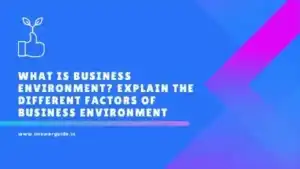Climate change and global warming are among the most pressing global issues of our time. They are closely related but distinct phenomena that are causing significant environmental, social, and economic challenges worldwide. Let’s discuss each of these issues in the context of recent global developments:
Climate Change:
Climate change refers to the long-term alteration of temperature and typical weather patterns in a place. It encompasses various changes in weather conditions, including temperature rise, shifts in precipitation patterns, more frequent and intense extreme weather events, and changes in sea levels. Climate change is primarily driven by human activities, particularly the burning of fossil fuels (coal, oil, and natural gas), deforestation, industrial processes, and agricultural practices.
Recent Global Issues Related to Climate Change:
- Increasing Temperatures: Over the past few decades, the Earth’s average temperature has been rising at an alarming rate. Heatwaves and heat-related illnesses have become more common, putting vulnerable populations at risk.
- Extreme Weather Events: The frequency and intensity of extreme weather events such as hurricanes, floods, droughts, and wildfires have been on the rise due to climate change. These events cause devastating impacts on communities and ecosystems.
- Melting Glaciers and Ice Caps: Rising temperatures have led to the accelerated melting of glaciers and ice caps, contributing to rising sea levels and threatening coastal communities with inundation.
- Ocean Acidification: As a result of increased carbon dioxide (CO2) emissions, the oceans are absorbing more CO2, leading to ocean acidification. This poses a serious threat to marine ecosystems, including coral reefs and shellfish populations.
- Biodiversity Loss: Climate change is causing shifts in ecosystems, leading to changes in species distributions and migration patterns. Many species are struggling to adapt or face extinction due to the rapid changes.
Global Warming:
Global warming is a subset of climate change and refers specifically to the long-term increase in Earth’s average surface temperature. It is primarily driven by the greenhouse effect, where greenhouse gases (GHGs) such as carbon dioxide, methane, nitrous oxide, and fluorinated gases trap heat in the Earth’s atmosphere, leading to a warming effect.
Recent Global Issues Related to Global Warming:
- Greenhouse Gas Emissions: The burning of fossil fuels for energy, deforestation, and industrial processes continue to release massive amounts of greenhouse gases into the atmosphere. Reducing these emissions is crucial to mitigating global warming.
- Climate Diplomacy and International Agreements: In recent years, there has been a greater emphasis on international cooperation to address global warming. Agreements like the Paris Agreement aim to bring countries together to set targets for greenhouse gas emissions reduction.
- Renewable Energy Transition: The transition to renewable energy sources like solar, wind, and hydropower is gaining momentum worldwide. Countries are increasingly adopting clean energy policies to reduce reliance on fossil fuels.
- Carbon Pricing and Market Mechanisms: Some countries and regions have implemented carbon pricing mechanisms, such as carbon taxes or cap-and-trade systems, to incentivize emission reductions.
- Climate Activism: The youth-led climate movement and climate strikes have garnered significant attention, demanding urgent action from governments and corporations to combat global warming.
It is important to recognize that climate change and global warming have far-reaching implications for various aspects of society, including food security, public health, migration patterns, and economic stability. Addressing these challenges requires coordinated efforts at local, national, and international levels. Governments, businesses, communities, and individuals all play crucial roles in implementing sustainable practices, transitioning to clean energy sources, conserving natural resources, and protecting vulnerable communities from the impacts of climate change.



